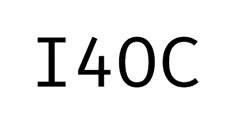Fostering critical literacy in secondary education through short stories in English
DOI:
https://doi.org/10.18050/rev.espergesia.v11i1.2837Keywords:
Short stories, Critical literacy, Language learningAbstract
The present study focused on the use of short stories as a pedagogical tool to cultivate critical literacy in secondary school students learning English as a foreign language, it was carried out in a public institution in Cúcuta, Norte de Santander, Colombia. Its main objective was to describe short stories as a pedagogical tool to foster critical literacy in the teaching of English. This qualitative research was based on the sociocritical paradigm with an inductive method and a spiral design, using participatory action approach. A lesson plan was developed and executed that strategically incorporated short stories, assessing their impact through observations in field notes, recordings, and focus group discussions. The results highlighted the advantages of short stories in education: as a powerful pedagogical resource to foster critical perspectives on social and cultural reality, and as a useful tool to improve linguistic aspects. The short stories also proved to be motivating, enriching English learning and promoting a meaningful educational experience. In summary, the study underlined the effectiveness of short stories in boosting critical literacy and improving language skills, advocating for the exploration of critical literacy practices throughout secondary education and their integration from primary education.
Downloads
References
Creswell, J. W. (2012). Educational research: planning, conducting, and evaluating quantitative and qualitative research (fourth edition). Pearson.
Al-Munawwarah, S. F., Gustine, G. G., & Musthafa, B. (2021). Fostering Students’ Critical Reading Through Digital Short Story Trailer Project. In Thirteenth Conference on Applied Linguistics (CONAPLIN 2020) (pp. 539-545). Atlantis Press. https://www.atlantis-press.com/article/125956015.pdf
Behmer, S. (2005). Digital storytelling: examining the process with high school students. Iowa State University. https://citeseerx.ist.psu.edu/document?repid=rep1&type=pdf&doi=89ea7641c70e57ed6bd3b9b7bae21d9606a0c79f
Bernal, C. (2016). Research methodology, administration, economics, humanities and social sciences. Pearson Educación de Colombia S.A.S.
Chaves, C., & Chapetón, C. M. (2019). Creating a book club with a critical approach to foster literacy practices. Folios, (50), 111-125. http://www.scielo.org.co/scielo.php?pid=S0123-48702019000200111&script=sci_arttext
Clandinin, D. J., Connelly, F. M., & Bradley, J. G. (1999). Shaping a professional identity: Stories of edu-cational practice. McGill Journal of Education, 34(2), 189-191. https://www.proquest.com/openview/72122ed968ecccc26bf04e69f5b01ba2/1?pq-origsite=gscholar&cbl=34515
Denzin, N. K. (1970). Sociological methods: a reference book. Aldine Publishing Company.
Escudero, J. M. (1987). Action research in the current landscape of educational research: some trends. Journal of Innovation and Educational Research, (3), 5-39.
Forero, C. (2015). Developing Critical Literacy for Second and Third Graders in the EFL Class. Corpora-ción Universitaria Minuto de Dios. https://repository.uniminuto.edu/bitstream/10656/4017/1/TEXT_ForeroGalvisCarlosMauricio_2015.pdf
Freire, P. (1970). Pedagogy of the oppressed. The Continuum International Publishing Group Inc.
Galeano, M. (2004). Project design in qualitative research. EAFIT University Editorial Fund.
Gómez Jiménez, M. C., & Gutiérrez, C. P. (2019). Engaging English as a foreign language students in critical literacy practices: The case of a teacher at a private university. Profile Issues in Teach-ersProfessional Development, 21(1), 91-105. https://doi.org/10.15446/profile.v21n1.71378
Halimah, H., & Damaianti, V. S. (2018). Creating narratives and revision circle: literacy dimension learning strategies using didactic values of m. kasim’s funny short stories. Jurnal Pendidikan Bahasa dan Sastra, 18(2), 283-293. https://doi.org/10.17509/bs_jpbsp.v18i2.15516
Hughes, J. M. (2007). Poets, poetry and new media: Attending to the teaching and learning of poetry. The University of Western Ontario.
Janks, H. (2014). Critical literacy’s ongoing importance for education. Journal of Adolescent & Adult Literacy, 57(5), 349-356. https://doi.org/10.1002/jaal.260
King, C. U. (2022). Stories to live by, stories to teach with: a narrative inquiry into preservice teachers' knowledge of teaching literacy from a critical literacy framework with diverse children's litera-ture [Doctoral dissertation, University of Missouri, Columbia]. https://doi.org/10.32469/10355/93970
Kurniawati, N., Sugaryamah, D., & Hasanah, A. (2020). Proposing a model of critical literacy program for fostering Indonesian EFL students’ critical thinking skills. Journal of Education and Learning (EduLearn), 14(2), 234-247. https://doi.org/10.11591/edulearn.v14i2.15084
Luke, A. (2012). Critical literacy: Foundational notes. Theory into practice, 51(1), 4-11. https://doi:10.1080/00405841.2012.636324
Mills, A. J., Durepos, G., & Wiebe, E. (2010). Encyclopedia of case study investigations (volumes I and II). Sage.
Mora, R. A. (2014). Critical literacy as policy and advocacy: Lessons from Colombia. Journal of Adoles-cent & Adult Literacy, 58(1), 16-18. https://www.researchgate.net/profile/Raul-Alberto-Mo-ra/publication/265091430_Critical_Literacy_as_Policy_and_Advocacy/links/5c3ffcc7299bf12be3cda6f9/Critical-Literacy-as-Policy-and-Advocacy.pdf
Novianti, N. (2021). Introducing Critical Literacy to Pre-Service English Teachers through Fairy Tales. Journal of Literary Education, (4), 196-215. https://ojs.uv.es/index.php/JLE/article/view/21026/19116
Papelexatou, E. (2021). Education in the ‘Post-Truth’ era: The importance of Critical Literacy in the Greek EFL classroom. University of Patras (Greece). https://www.cicea.eu/pdfs/2019CONF/76_PAPALEXATOU_Education-in-the-Post-Truth-era-The-importance-of-Critical-Literacy.pdf
Pathan, M., & Al-Dersi, Z. (2013). Investigating the role of short-stories in overcoming the problems faced by the Libyan EFL learners in reading comprehension skill. An International Journal in English, 12(1), 1-8. https://the-criterion.com/V4/n1/Pathan.pdf
Pennycook, A. (2004). Critical applied linguistics. The handbook of applied linguistics, 784-807.
Schoch, K. (2020). Research design and methods: an applied guide for the scholar-practitioner. SAGE Publications, Inc.
Vélez, D. (2018). Gnoseo-epistemological foundations for research in Social Sciences. Laripse.
Yin, R.K (2018). Case study research: design and methods (6th ed.). WISE.


















